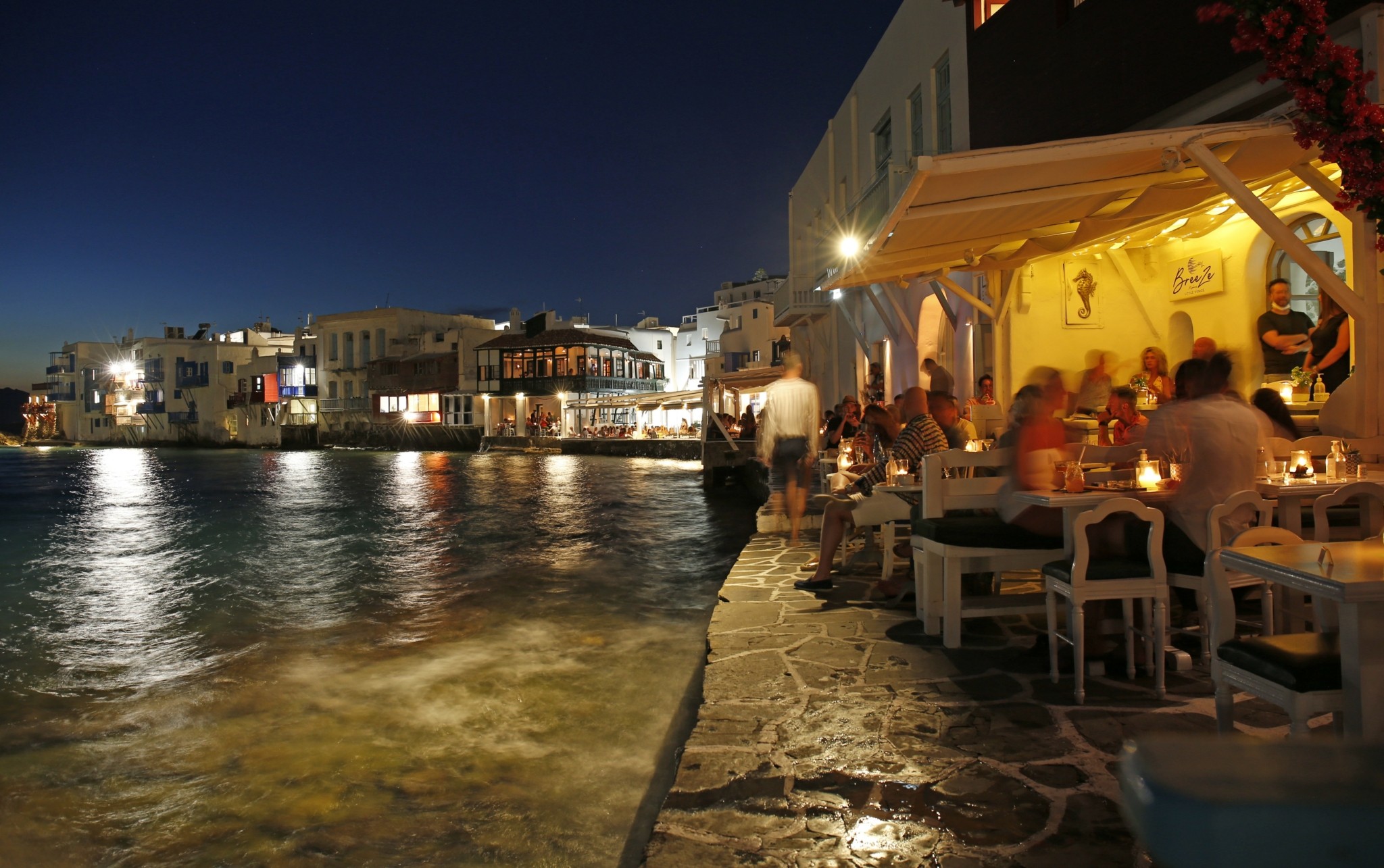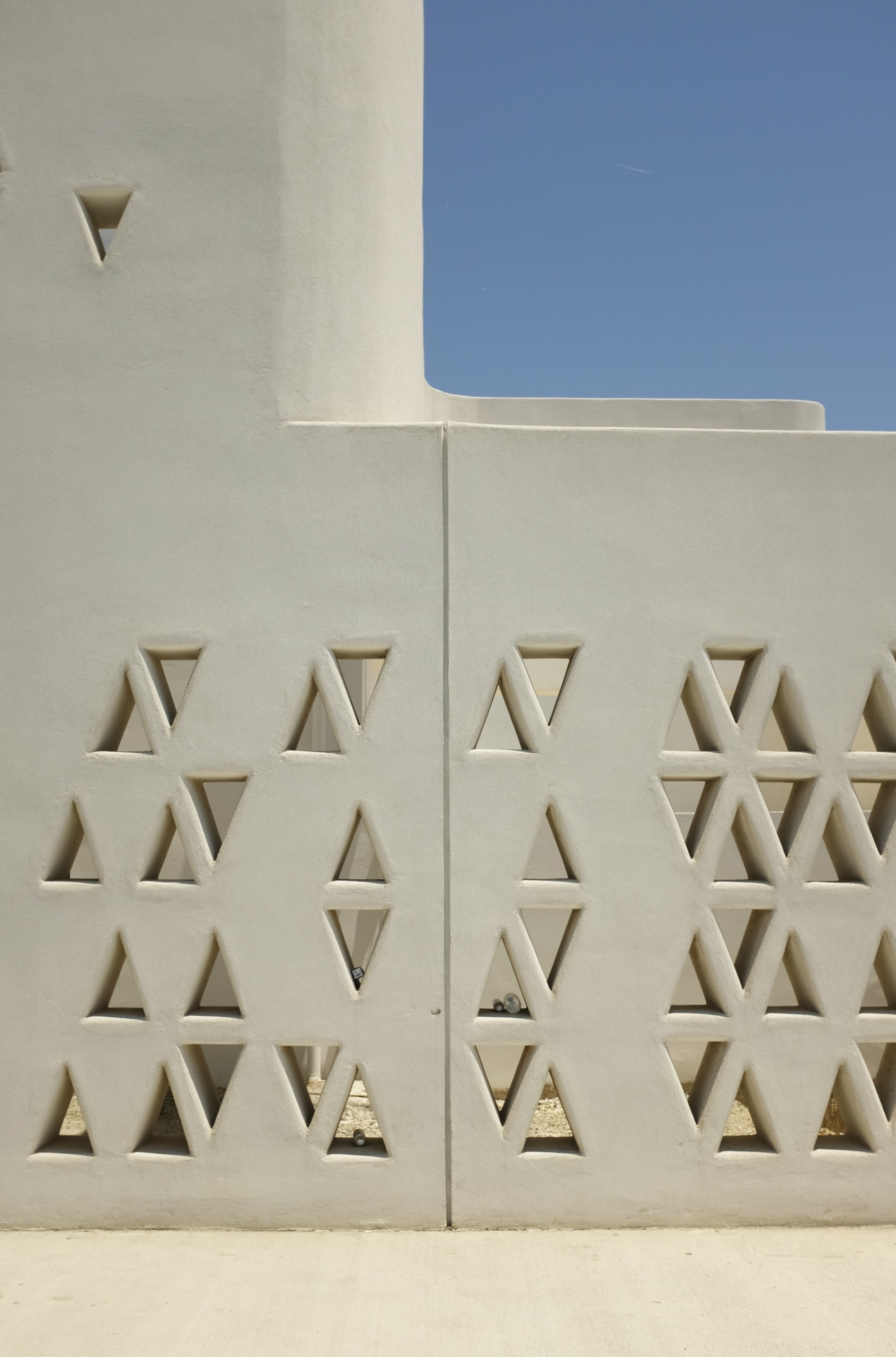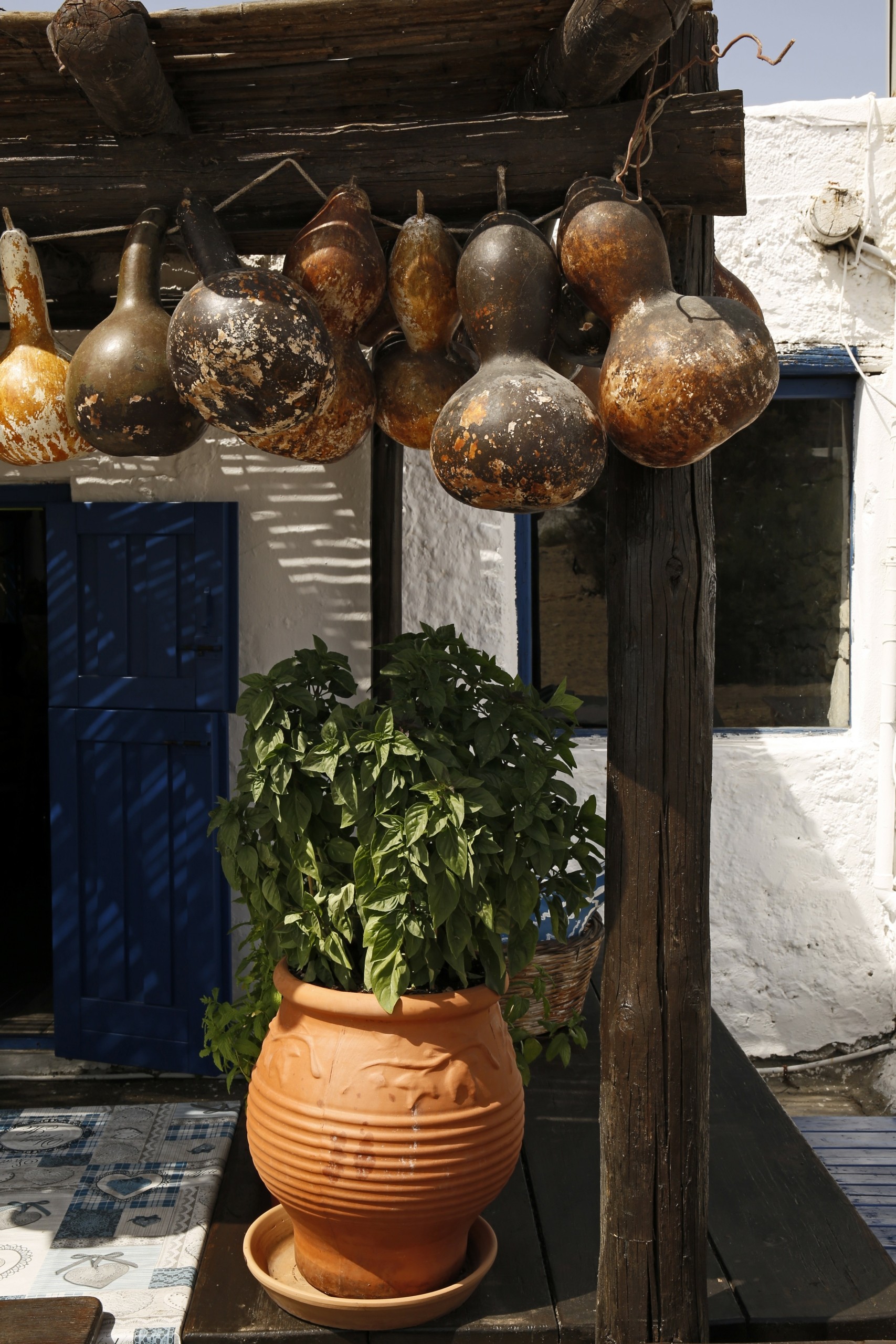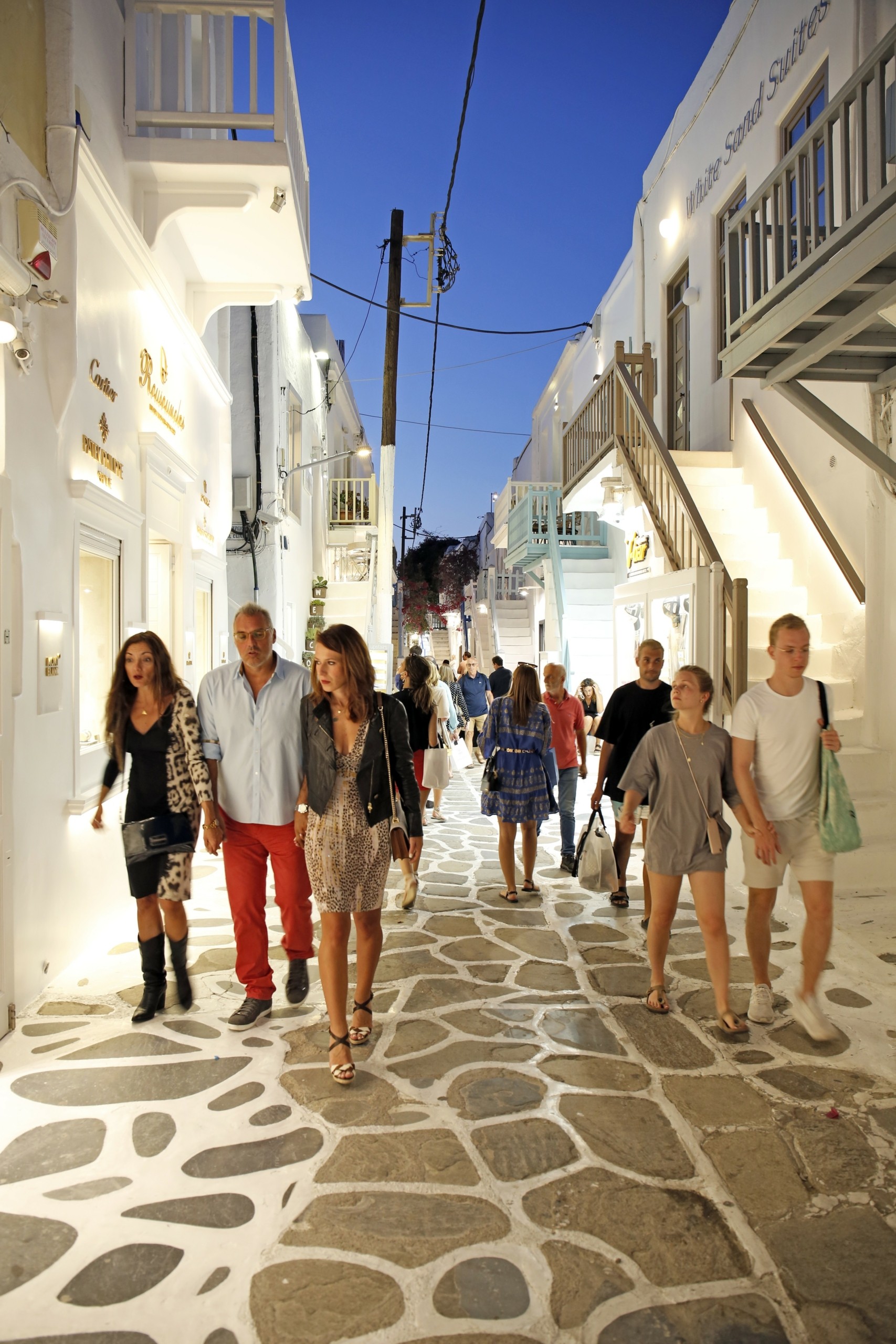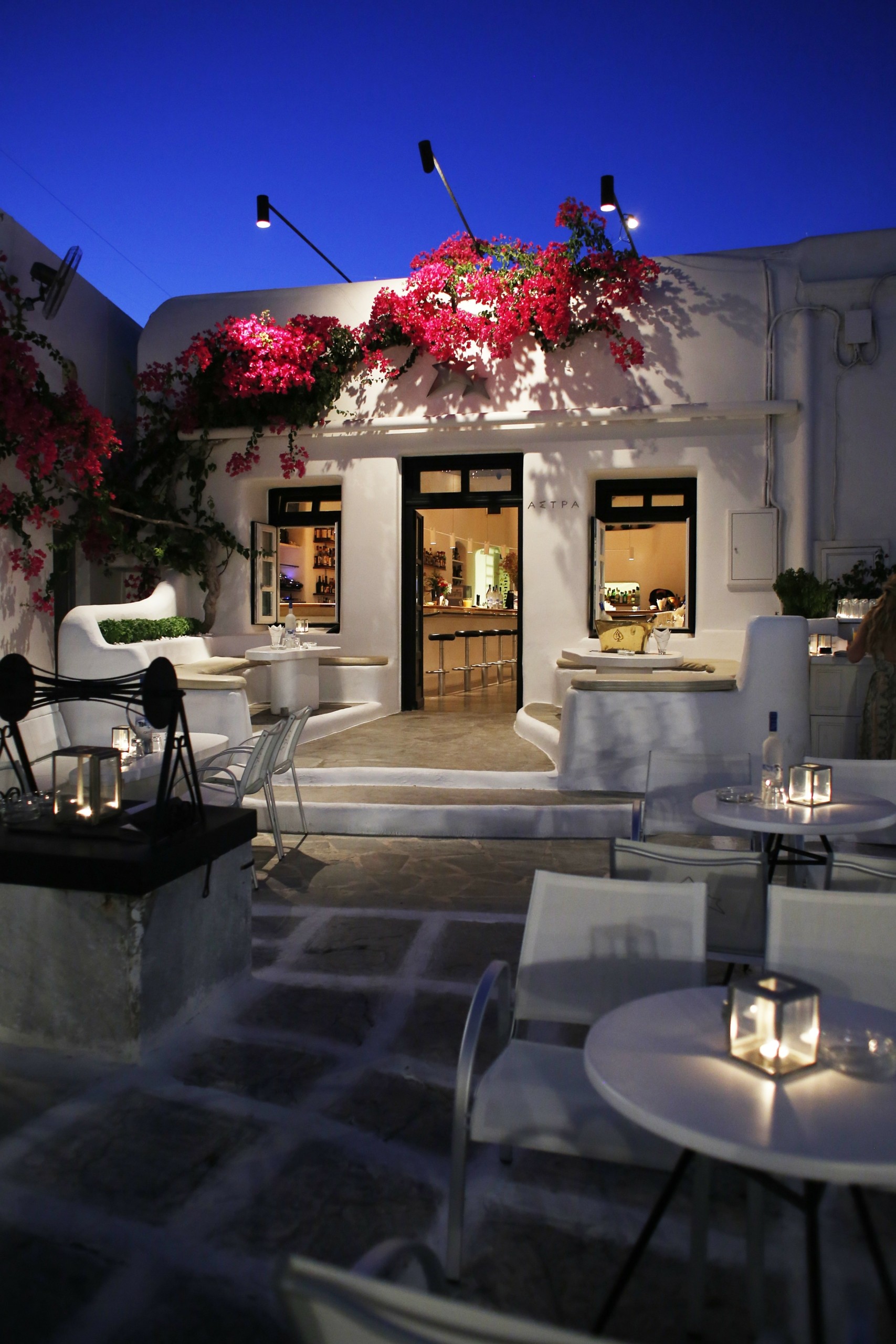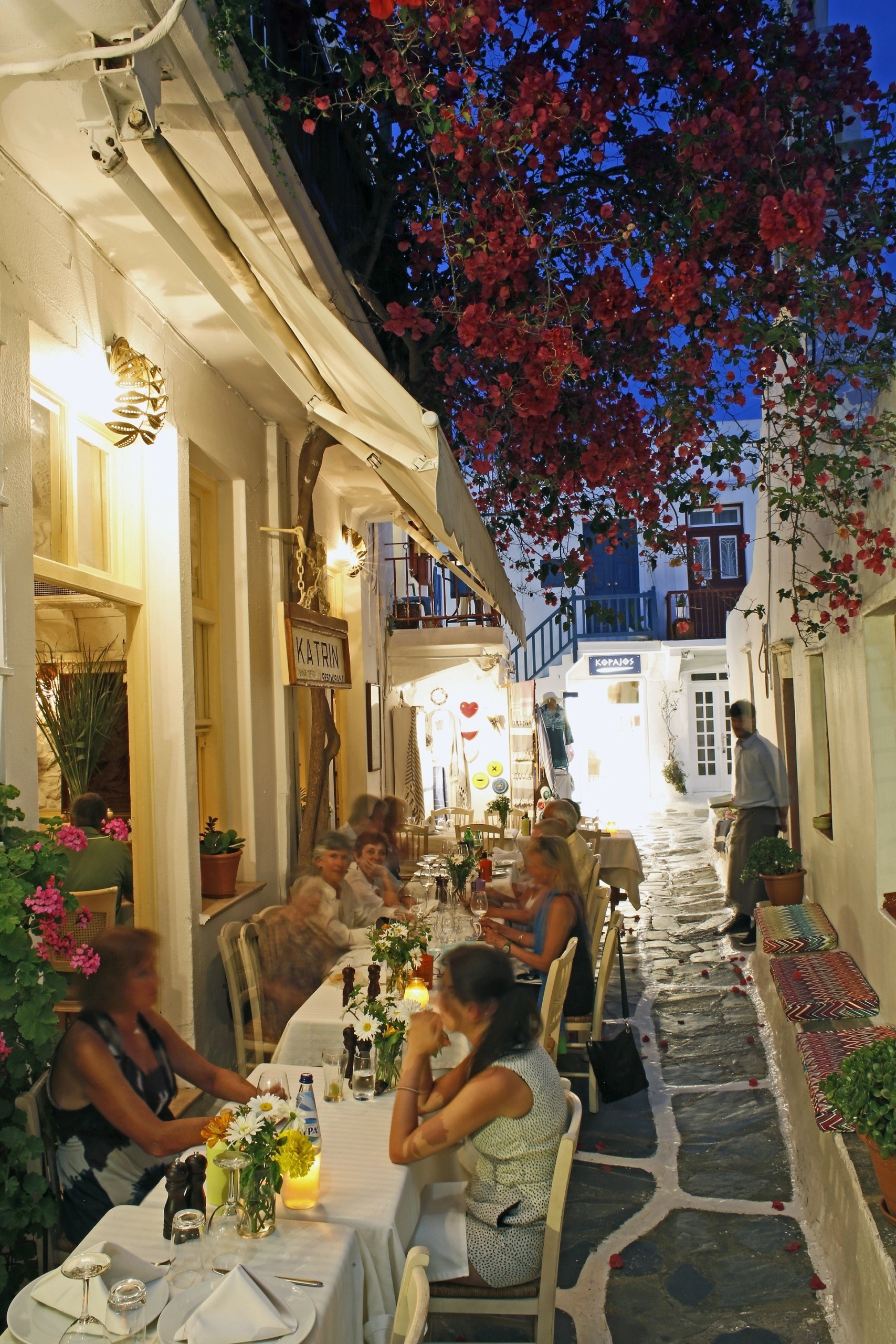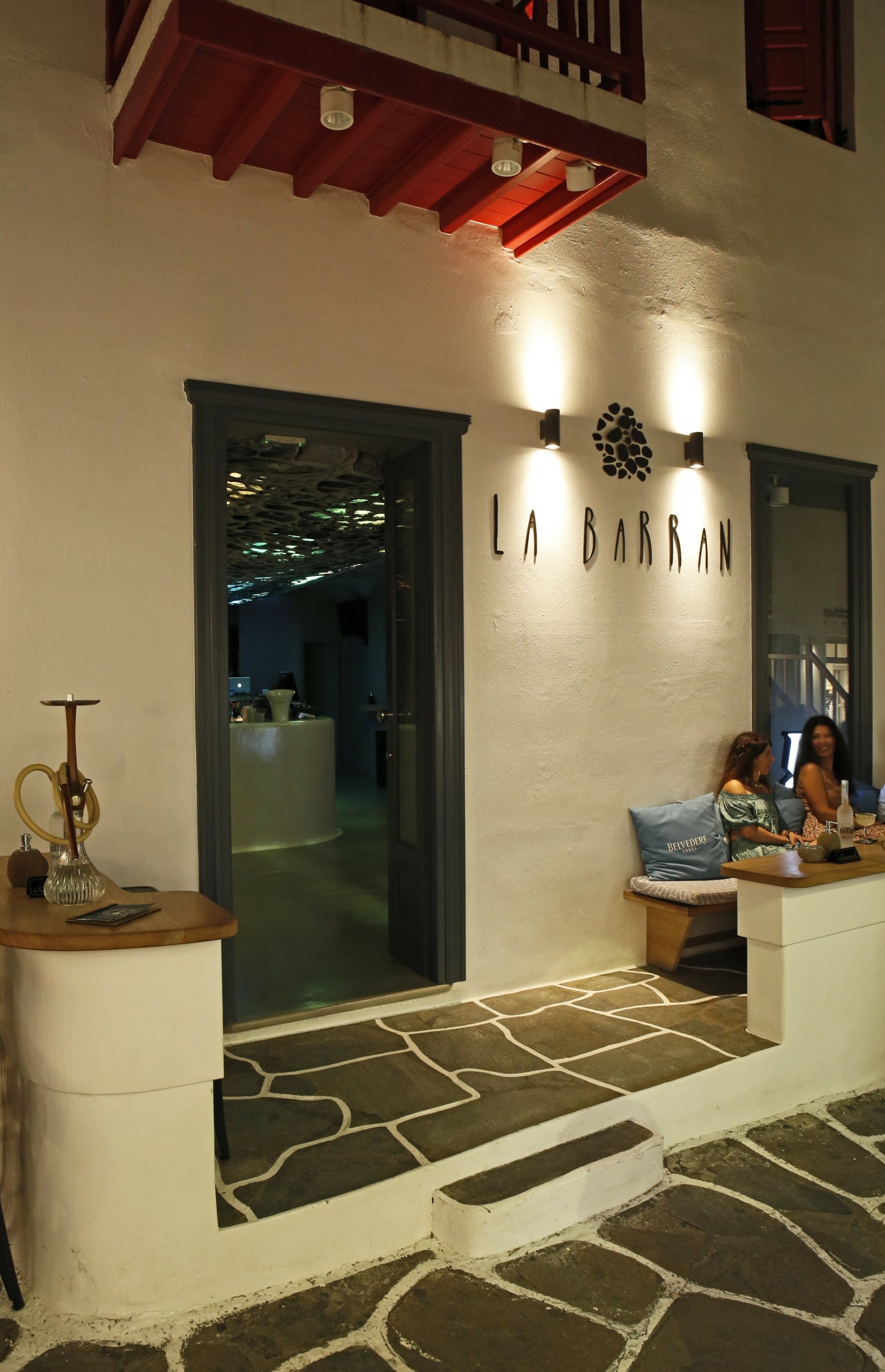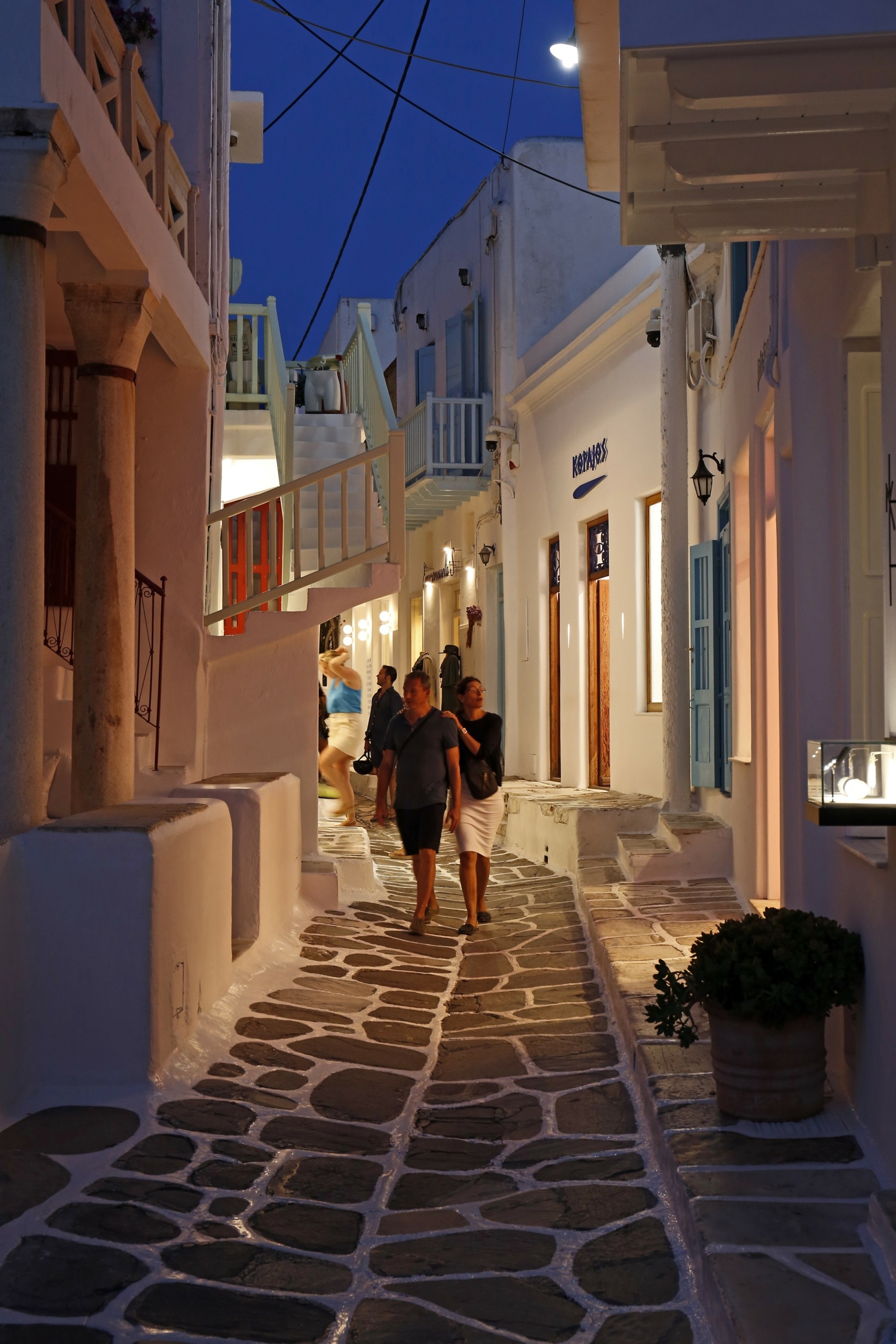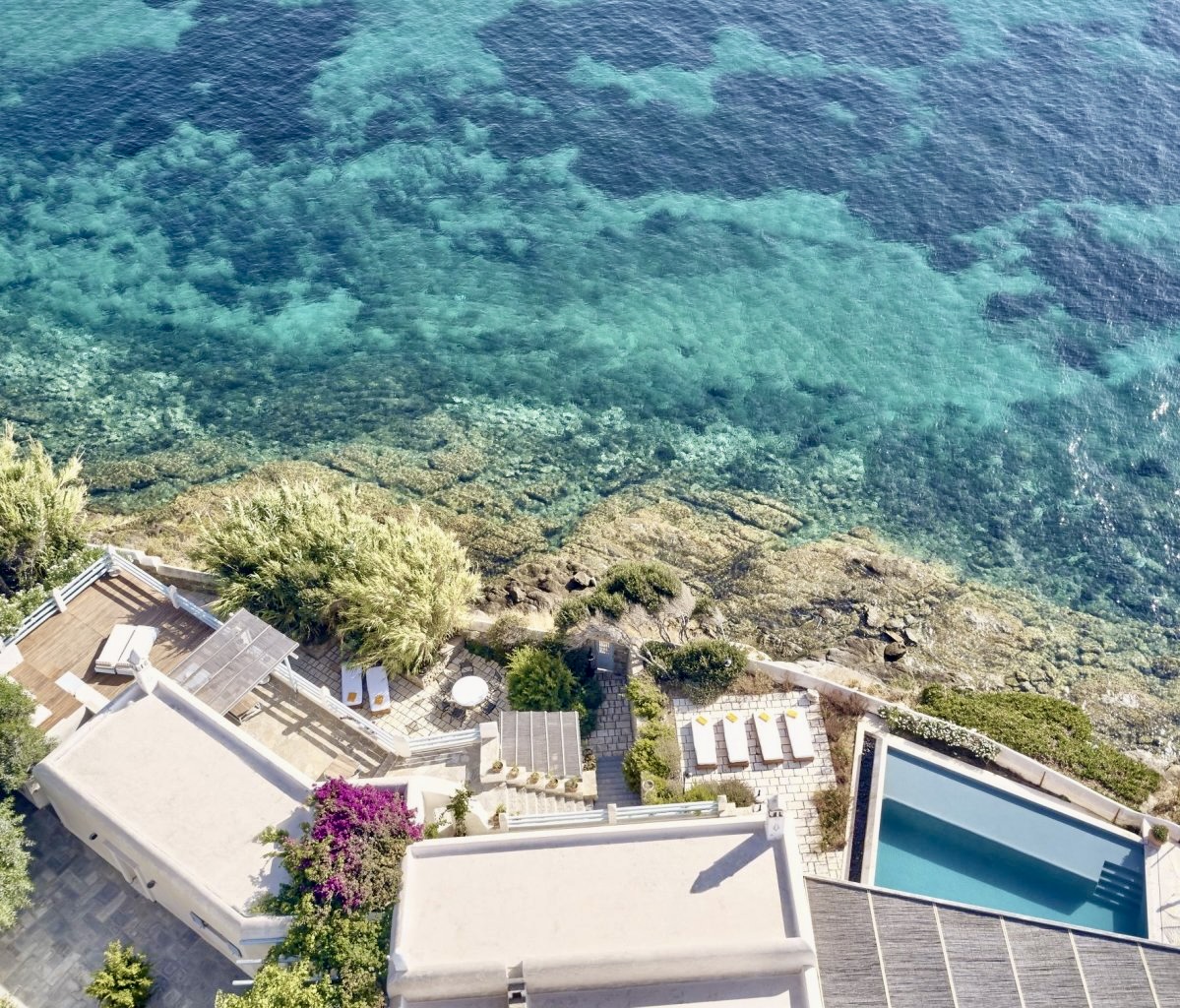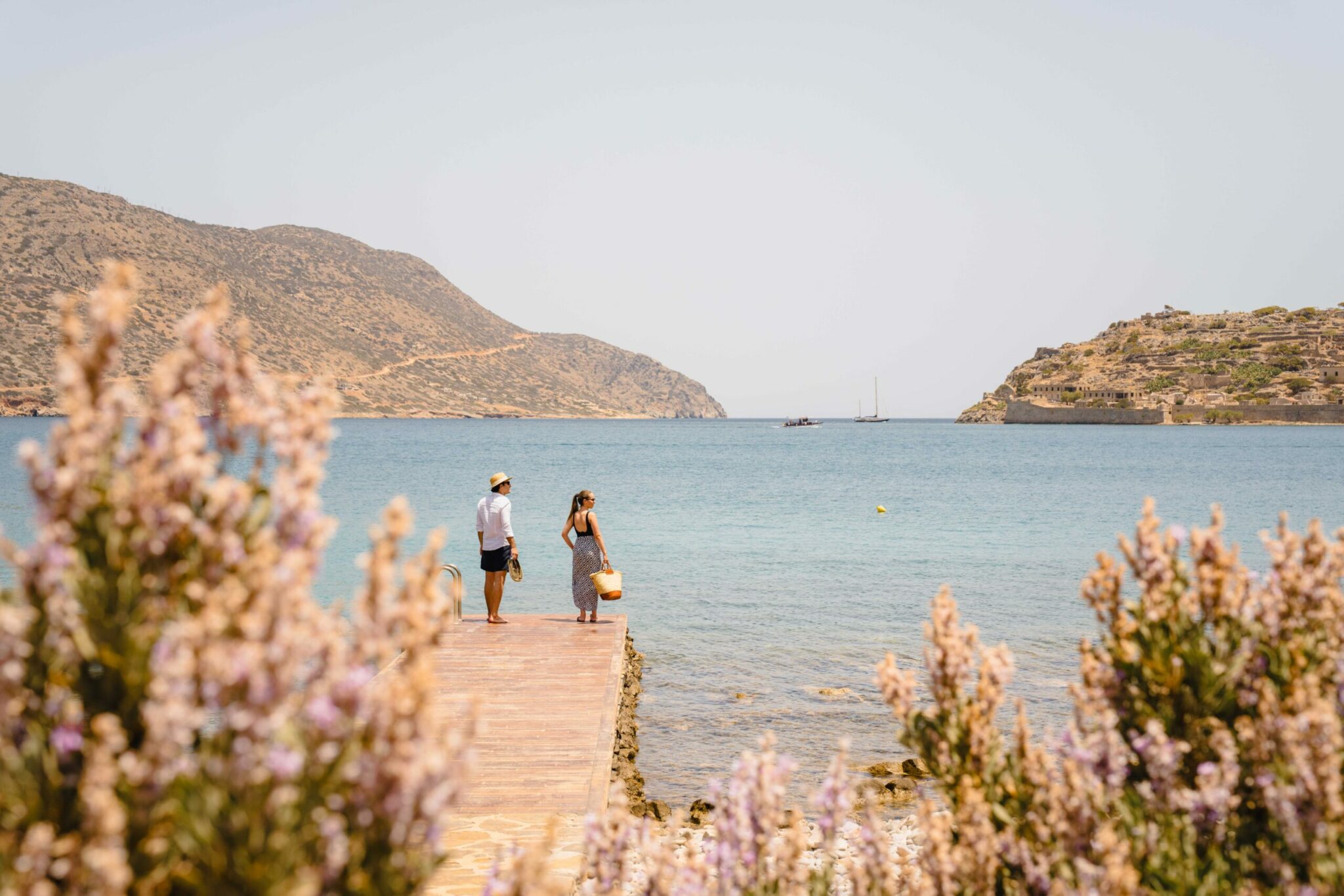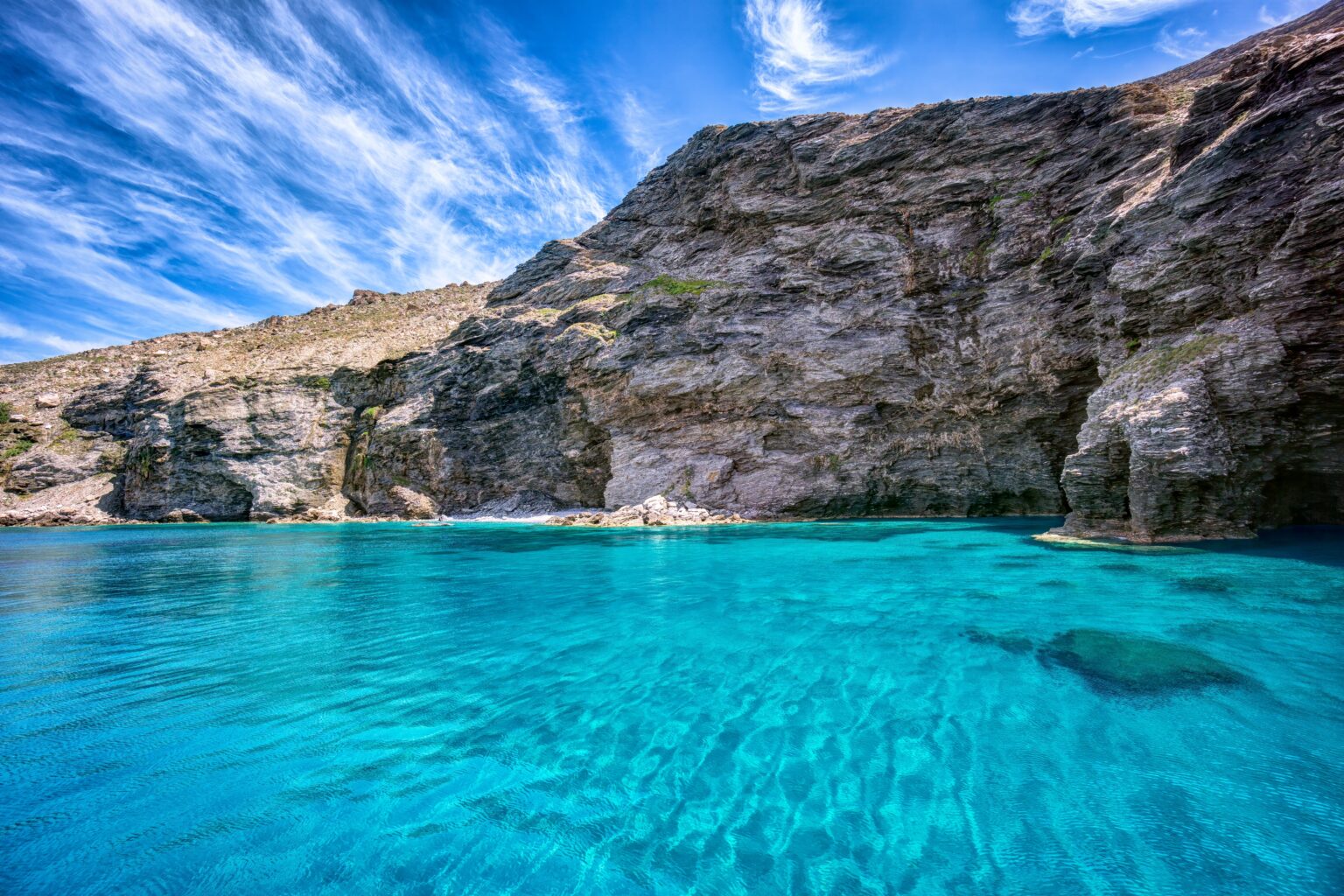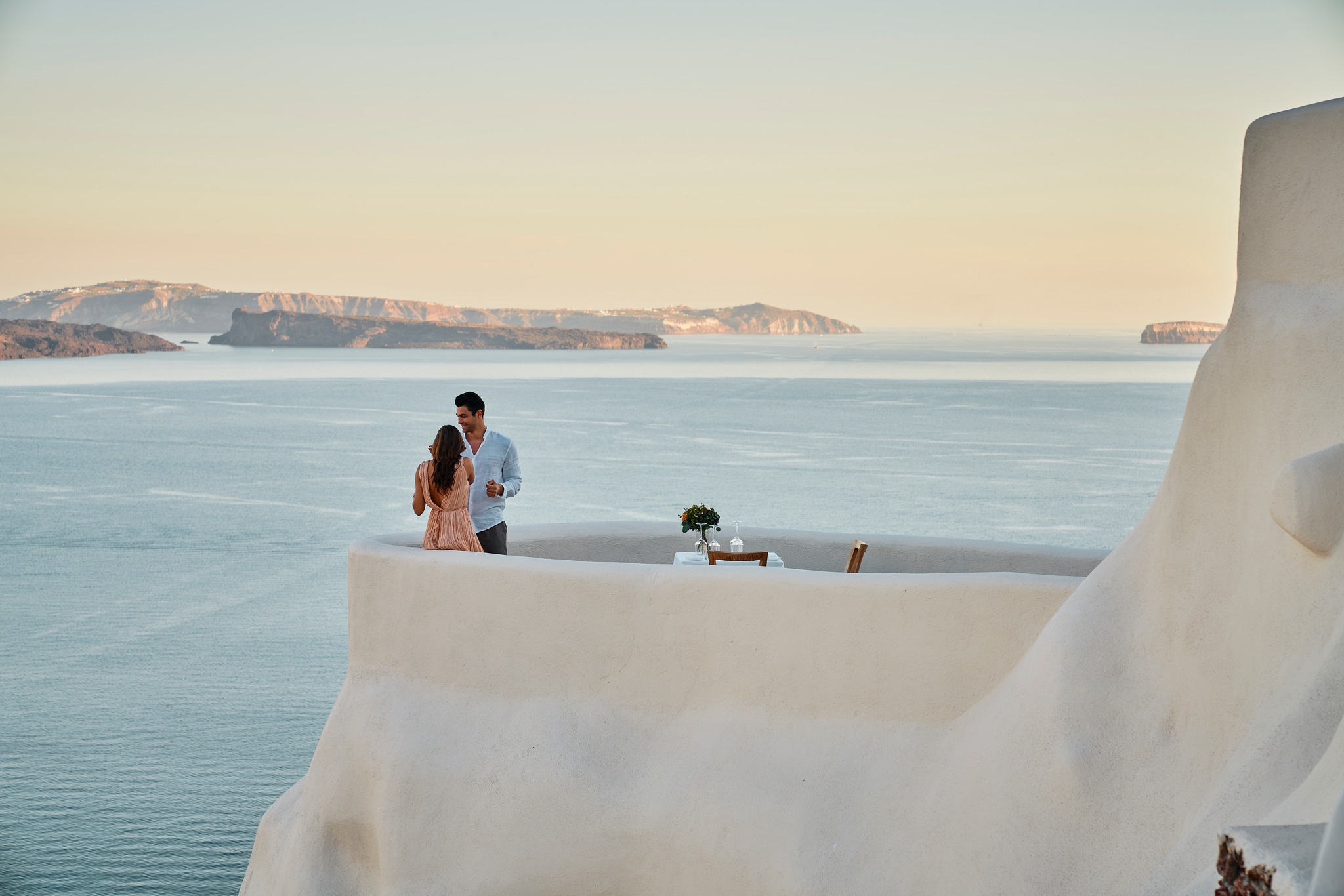Peering through the airplane window over the wing, the sea sprawls out before me – a spectrum of blue that triggers an excitement for landing. Abruptly, our plane touches down and the monotonous blues give way to brown sun scorched landscapes, stone structures, and whitewashed houses dotting the horizon. Beyond the airport’s barbed wire, a black jeep strategically positioned for plane spotting houses an exuberant group of young adults. Their cheers piercing the hot afternoon air, they clutch bottles and glasses, hinting at a 24-hour vigil.
The new arrivals’ building is exactly what it suggests – a strikingly beautiful, modern edifice. I dismiss thoughts regarding its practicality for the millions who visit Mykonos annually, a task best left to journalists. As I step out into the mesmerizing Cycladic light, I’m imbued with a joy akin to the leading characters in the eighties film “Summer Lovers” as seen in their opening scenes.
Over the enticing aroma of grilled octopus and seafood mezzes at Joanna’s Place (also known as Niko’s Taverna) on Megali Ammos, our group debates the night’s plan in Chora. However, with the approach of dusk and no conclusive decisions, we each set off independently into Chora’s labyrinthine slate paved alleyways, promising to regroup if fate allows our paths to cross.
The man next to me on the bus is Jean Paul Gaultier
My journey through Chora commences at the bustling bus stop at Fabrica. This noisy junction, occasionally spiraling into chaos. The traffic wardens struggle to maintain order amidst the commotion. During the frenzied days of August, no vehicle is permitted entry as the situation becomes excessively chaotic. A vivid memory resurfaces of an intimate bus ride from Platis Yalós, where beach-bound boats had left us. Amidst the impatient crowd eager for their night out, I discovered my neighbouring head-bobbing, strap-holder to be none other than Jean Paul Gaultier.
The route towards the Lakka neighborhood is a sensory symphony of lights, scents, and music emanating from various businesses, including souvenir shops, small grocery stores, clothes boutiques, crêperies, and dimly lit restaurants. The entrance to the Matogiannia neighborhood is a sensorial feast, cooled by the banks of cool air from the scores of humming air-conditioners, there’s an odd blend of chocolate, melting butter, and a hint of souvlaki aroma from the island’s most legendary souvlaki joint.
Choosing to venture towards Little Venice, I navigate past a kaleidoscope of jewelry stores, gift shops, dazzling lights, high heels, straw sandals, adorned busts, tattooed muscles, and the faint whiff of perspiration – an indication that the cooling meltemi winds do not blow down these narrow alleys. My ears pick up snippets of dialects and languages from every corner of the globe, creating a modern-day Babel.
An unhurried stroll through Chora, when it isn’t teeming with tourists, feels like a tribute to the island’s diversity. The futile attempt to compare Mykonos to any other traditional Cycladic island amuses me, as selfie-taking tourists bustling around obliviously pose with social media-ready gratitude. The alleys of Chora, in all their charm, offer the perfect backdrop to illuminate faces and desires at any time of day or night.
Having the luxury of knowing shortcuts, I meander through quieter areas, taking a pause at the legendary La Maison de Katrin, by the side of the church of Agios Gerasimos, under the canopy of a pink flowered bougainvillea. This historic restaurant, serving its clientele since the 1970s, upholds a consistently high standard with recipes by the owner’s mother, Katerina. The staff, including Periklis, Vaggelis, Theodora, and Tasia, warmly welcome their guests, some of whom are by now ‘seasonal’ regulars.
Inside the restaurant hidden from the passersby
Further ahead lies Kalogera street – undeniably one of Chora’s most beautiful. This artistic avenue showcases quality shops, galleries, and my personal favorite, Maereio. This authentic Mykonian eatery serves as a meeting point for the discerning and those seeking less attention. The complimentary shot of mastic liquor from Isidoros and the warm welcome from Dimitris add to the charm of this establishment. Expect unexpected friendships, impromptu conversations, and the world-renowned meatballs of their mother, Asimina.
Kalogera street eventually leads to the Municipal Gallery of Mykonos, the balcony of which is adorned by an iconic bougainvillea tree. This building plays host to an array of delightful and sometimes unexpected exhibitions throughout the summer, attracting island dwellers and those travelling through, thus enhancing the island’s art scene.
As night deepens, bar music amplifies, and second or third rounds of drinks are poured. La Barran’s little balcony becomes the new ‘go to’. The narrow alleyways become crowded with bodies, perfumes, voices, and clumsy dance moves, while thick cigar smoke lingers above our heads theatrically illuminated by the crisscross of lights. Some shops dim their lights, transforming parts of Chora into makeshift clubs, while the legendary Astra bar at Tria Pigadia remains the perennial meeting point.
Several hours and many drinks later, night’s darkness fades into the soft pink hues of dawn. Hunger outweighs the need for sleep, and in this moment, desires align perfectly with the natural rhythm of life – only in Mykonos.
Read Also:
Glamourous Mykonos: A Fusion of Global Brands and Local Treasures | travel.gr
From Sunset to Sunrise: Mykonos Town’s Non-Stop Nightlife | travel.gr
Mykonos Beach Bars: The Perfect Mix of Sun, Sea and Sounds | travel.gr



